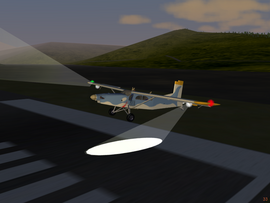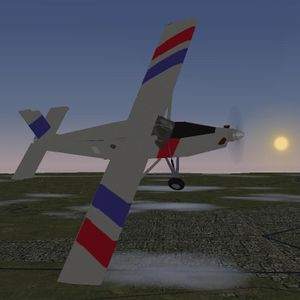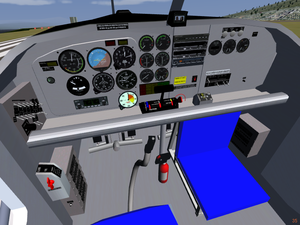The printable version is no longer supported and may have rendering errors. Please update your browser bookmarks and please use the default browser print function instead.
Pilatus PC-6 Porter is a single-engined utility aircraft. It is famous in the aviation world for its Short Take-off and Landing (STOL) performance on almost any type of terrain; it can take-off within a distance of 195 metres (640 ft) and land within a distance of 130 metres (427 ft) while carrying a payload of 1,500 kg (3,300 lb).
Aircraft help
| Key
|
Function
|
| Ctrl+L
|
Toggle tailwheel lock
|
Takeoff
- Flaps down 10 degrees.
- Apply 100% Engine RPM While accelerating raise the tail.
- Be prepared to use Rudder to counteract Swing.
Climb and cruise
- The plane picks up speed fast so be sure to raise Flaps below 80 kts.
- The best climb speed is 80-90 kts.
- Cruise Power is at 90% Engine RPM.
Landing

adjustable Landing Lights
- Lower Flaps under 80 kts and set Prop to Max RPM.
- Approach Speed is 60-70 kts.
- Approach the threshold with 60 kts.
- Don't reduce power too early as the idle prop acts as effective speed brake.
Features
- Complete 3D cockpit with lots of controllable switches
- Engine and structural failure simulation
- Co-pilot comments
- Livery selection
External links
|
|---|
| | Civilian aircraft | |
|---|
| | Military aircraft | |
|---|
|



